Happy Birthday, Alfred Hitchcock!
It was a story that he frequently told in interviews: when Sir Alfred Hitchcock was only five years old, his father (who referred to his son as a “little lamb without a spot”) sent him to the local police station with a note for the constable. The policeman read the note and ushered young Alfred into a cell that he then locked behind the youngster, and after holding him there for several minutes admonished him: “This is what we do to naughty boys.” Whether or not the anecdote is true, it instilled in Hitchcock a lifelong fear of the police—he wouldn’t even drive a car out of concern he might get a parking ticket. The apocryphal story would also have an effect on the many motion pictures “The Master of Suspense” directed throughout his career—those films feature themes of guilt and voyeurism with a common plot involving “the wrong man” (an individual accused of a crime who must prove his innocence). The man who became one of the most successful movie directors in the history of Hollywood was born in Leytonstone, Essex, England on this date in 1899.
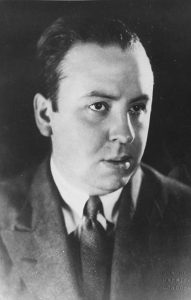 Alfred Joseph Hitchcock was the youngest of three children born to greengrocer William Hitchcock and his wife Emma Jane. Educated in both Jesuit and Catholic schools as a child, young Alfred later attended engineering school in London. (He became a draftsman and advertising designer for a cable company after graduation.) Hitchcock found a creative outlet in both writing short stories and dabbling in photography as a hobby. Both of these pursuits inspired him to apply for a job as a title designer for the London branch of Paramount Pictures. In 1920, he went to work for Islington Studios in the same position. At that time, Islington was owned by Famous Players-Lasky, and would later be acquired by Gainsborough Pictures.
Alfred Joseph Hitchcock was the youngest of three children born to greengrocer William Hitchcock and his wife Emma Jane. Educated in both Jesuit and Catholic schools as a child, young Alfred later attended engineering school in London. (He became a draftsman and advertising designer for a cable company after graduation.) Hitchcock found a creative outlet in both writing short stories and dabbling in photography as a hobby. Both of these pursuits inspired him to apply for a job as a title designer for the London branch of Paramount Pictures. In 1920, he went to work for Islington Studios in the same position. At that time, Islington was owned by Famous Players-Lasky, and would later be acquired by Gainsborough Pictures.
At Gainsborough, Alfred Hitchcock found a patron in producer Michael Balcon, who helped Hitch move up through the ranks via a series of promotions. Alfred served as an art designer, and then as an assistant director (second-unit director). Although Hitchcock’s official “directed by” credit wouldn’t appear onscreen until 1925’s The Pleasure Garden, the novice behind the camera had actually directed a movie as far back as 1922—a movie with the unfortunate title of Number 13. (The production got cancelled after the funding fell through.) Hitchcock would also direct (without credit) a short in 1922 entitled Always Tell Your Wife. Hitch followed Garden with The Mountain Eagle in 1926 (Eagle appears to be a lost film) and then The Lodger: A Story of the London Fog (1926), with which he started to demonstrate his considerable cinematic talents. It was Hitchcock’s first thriller (a genre he would return to time and time again) and was heavily influenced by German expressionism. (Lodger also marked the first onscreen appearance of the director; he made the first of many cameos only because he was short an actor.)
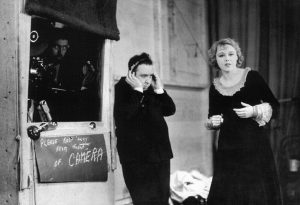 Alfred Hitchcock continued to perfect his craft in the silent era, adding such interesting items to his c.v. as The Ring (1927) and The Farmer’s Wife (1928). His tenth film, Blackmail (1929), was the first British “talkie” and allowed him to experiment with early sound techniques. At Gaumont-British, Hitchcock crafted such classic movie thrillers as Murder! (1930), The Man Who Knew Too Much (1934), The 39 Steps (1935), Sabotage (1936), and Young and Innocent (1937). A 1938 film, The Lady Vanishes, became a critical and commercial success (the director would win the New York Film Critics Circle Award for Best Director in 1939—the only award he’d receive for his direction). It also secured him a lucrative job offer from producer David O. Selznick, who signed Alfred to a seven-year contract in March of 1939.
Alfred Hitchcock continued to perfect his craft in the silent era, adding such interesting items to his c.v. as The Ring (1927) and The Farmer’s Wife (1928). His tenth film, Blackmail (1929), was the first British “talkie” and allowed him to experiment with early sound techniques. At Gaumont-British, Hitchcock crafted such classic movie thrillers as Murder! (1930), The Man Who Knew Too Much (1934), The 39 Steps (1935), Sabotage (1936), and Young and Innocent (1937). A 1938 film, The Lady Vanishes, became a critical and commercial success (the director would win the New York Film Critics Circle Award for Best Director in 1939—the only award he’d receive for his direction). It also secured him a lucrative job offer from producer David O. Selznick, who signed Alfred to a seven-year contract in March of 1939.
In the 1940s, Alfred Hitchcock directed classics like Rebecca (1940), Spellbound (1945), and Notorious (1946) for Selznick. David O. also lent his employee out to various studios to make pictures like Suspicion (1941), Saboteur (1942), Shadow of a Doubt (1943), and Lifeboat (1944). Hitch soon developed a capacity for self-promotion that would make Walt Disney envious. He made an appearance on Rudy Vallee’s Royal Gelatin Hour in April of 1939, and on the July 22, 1940 broadcast of Forecast (the pilot for the later Suspense series) purportedly directed a radio version of The Lodger that featured two actors working in his film production of Foreign Correspondent: Herbert Marshall and Edmund Gwenn. (The “Hitchcock” heard on that broadcast is actually Joseph Kearns.) Alfred would guest star on shows like Information Please and The Fred Allen Show, and his films would be recreated on anthology programs like The Lux Radio Theatre and Screen Directors’ Playhouse. Hitch attempted a permanent radio gig with an audition for a series entitled Once Upon a Midnight dated May 11, 1945 (“Malice Aforethought”)…but apparently there were no takers.
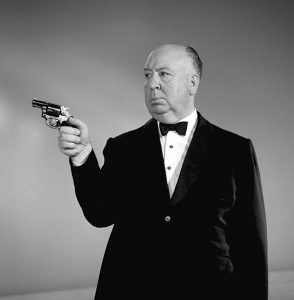 His weekly radio series may not have gotten off the ground…but the small screen was another matter. On October 2, 1955, Alfred Hitchcock Presents premiered over CBS-TV, allowing the Master of Suspense to visit with TV audiences. As the host of an anthology series, with stories marinated in mystery and murder, Hitchcock soon found himself a Top 10 favorite and pop culture icon as he was introduced weekly to the strains of Charles Gounod’s Funeral March of a Marionette (“Good evening”). Alfred Hitchcock Presents enjoyed a healthy five-year-run on CBS before switching networks to NBC in 1960. After two more years as a half-hour program, the show expanded to sixty minutes (The Alfred Hitchcock Hour) in the fall of 1962 and ran until 1965.
His weekly radio series may not have gotten off the ground…but the small screen was another matter. On October 2, 1955, Alfred Hitchcock Presents premiered over CBS-TV, allowing the Master of Suspense to visit with TV audiences. As the host of an anthology series, with stories marinated in mystery and murder, Hitchcock soon found himself a Top 10 favorite and pop culture icon as he was introduced weekly to the strains of Charles Gounod’s Funeral March of a Marionette (“Good evening”). Alfred Hitchcock Presents enjoyed a healthy five-year-run on CBS before switching networks to NBC in 1960. After two more years as a half-hour program, the show expanded to sixty minutes (The Alfred Hitchcock Hour) in the fall of 1962 and ran until 1965.
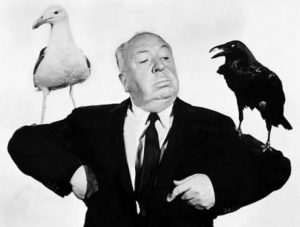 Being welcomed into the homes of Nielsen families every week certainly didn’t hurt Alfred Hitchcock where the box office was concerned. His movie successes during the 1950s include many that are considered classics today: Strangers on a Train (1951), Rear Window (1954), To Catch a Thief (1955), The Wrong Man (1956), Vertigo (1958), and North by Northwest (1959). Two of his best-known films, Psycho (1960) and The Birds (1963), were released in the 1960s. Hitchcock proved that he still hadn’t lost his suspenseful touch a decade later, when he made Frenzy (1972) and Family Plot (1976; his final film). Though nominated five times for a Best Director Academy Award, Sir Alfred (he was knighted in 1980) had to settle for a consolation prize in the Irving G. Thalberg Memorial Award. (His 1968 acceptance speech established a precedent for brevity: “Thank you…very much indeed.”) Alfred Hitchcock passed away in 1980 at the age of 80.
Being welcomed into the homes of Nielsen families every week certainly didn’t hurt Alfred Hitchcock where the box office was concerned. His movie successes during the 1950s include many that are considered classics today: Strangers on a Train (1951), Rear Window (1954), To Catch a Thief (1955), The Wrong Man (1956), Vertigo (1958), and North by Northwest (1959). Two of his best-known films, Psycho (1960) and The Birds (1963), were released in the 1960s. Hitchcock proved that he still hadn’t lost his suspenseful touch a decade later, when he made Frenzy (1972) and Family Plot (1976; his final film). Though nominated five times for a Best Director Academy Award, Sir Alfred (he was knighted in 1980) had to settle for a consolation prize in the Irving G. Thalberg Memorial Award. (His 1968 acceptance speech established a precedent for brevity: “Thank you…very much indeed.”) Alfred Hitchcock passed away in 1980 at the age of 80.
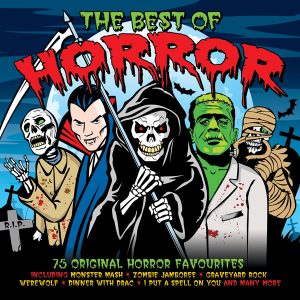 Did you know that Alfred Hitchcock was a bandleader? I didn’t either, but his “orchestra” is one of the many featured artists on Best of Horror—a 3-CD collection of classic novelty hits like Monster Mash, The Purple People Eater, and Dinner with Drac (Pt. 1). Sir Alfred and his musical aggregation entertain with Music to Be Murdered By, and in the immortal words of Stan Freberg–it’s “wun’erful, wun’erful!” Okay…I’m being a little facetious here—but pick yourself up a copy from the Radio Spirits catalog, won’t you? Or you could pick yourself up an Alfred Hitchcock Mystery Jigsaw Puzzle: 1000 Pieces (item #92808) by calling 800-833-4248.
Did you know that Alfred Hitchcock was a bandleader? I didn’t either, but his “orchestra” is one of the many featured artists on Best of Horror—a 3-CD collection of classic novelty hits like Monster Mash, The Purple People Eater, and Dinner with Drac (Pt. 1). Sir Alfred and his musical aggregation entertain with Music to Be Murdered By, and in the immortal words of Stan Freberg–it’s “wun’erful, wun’erful!” Okay…I’m being a little facetious here—but pick yourself up a copy from the Radio Spirits catalog, won’t you? Or you could pick yourself up an Alfred Hitchcock Mystery Jigsaw Puzzle: 1000 Pieces (item #92808) by calling 800-833-4248.

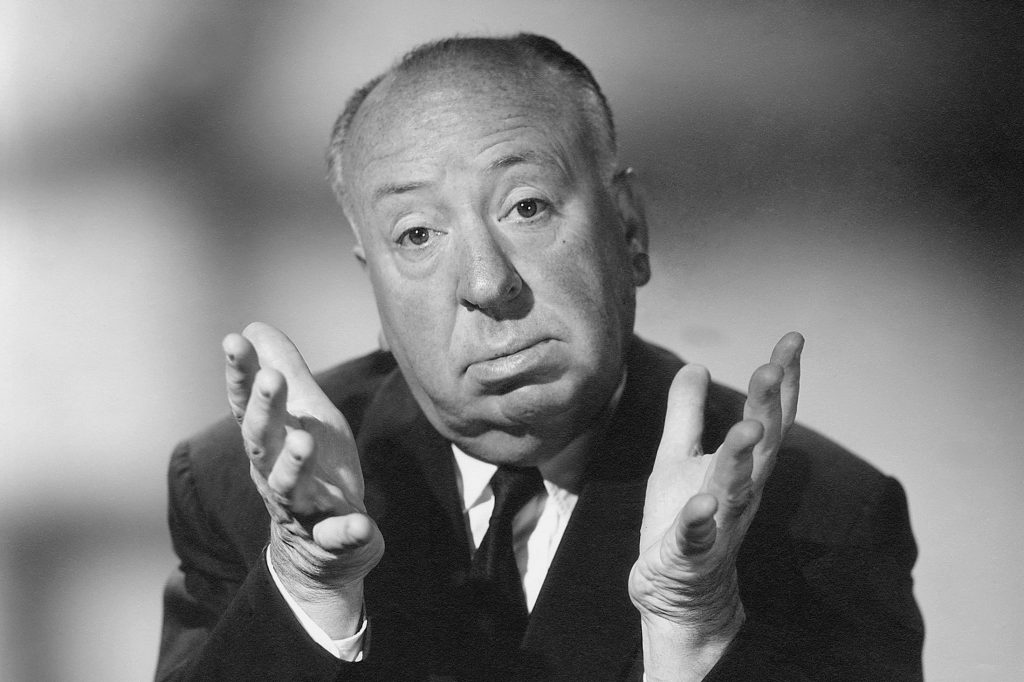

What a GREAT article on the greatest mystery director of all time!!! It’s just shocking that he wasn’t awarded an Oscar, he SHOULD have at least 7 or more of them.
Yes! He would have been the ultimate director in Hollywood history with that many Oscars, had he won them.